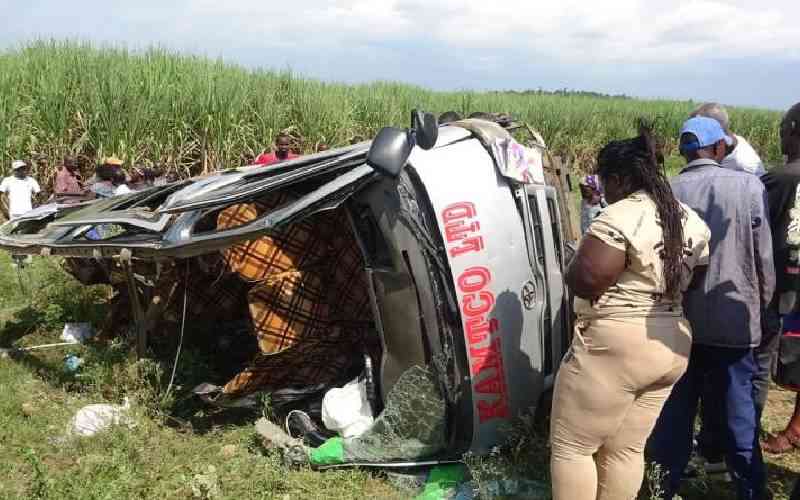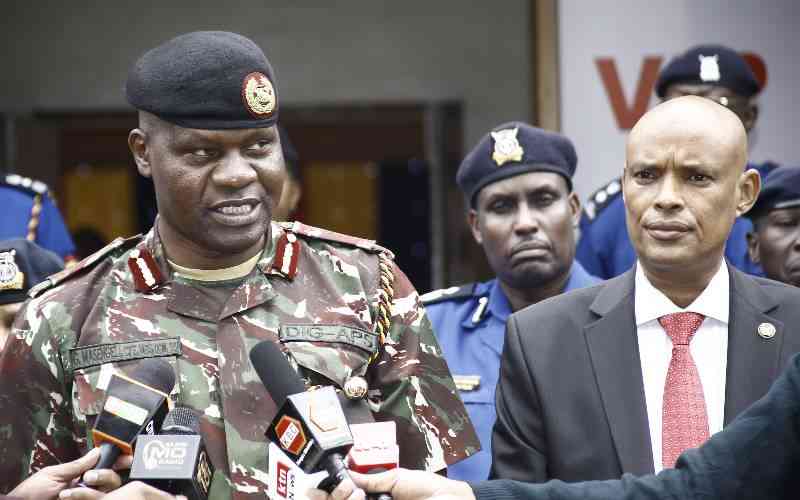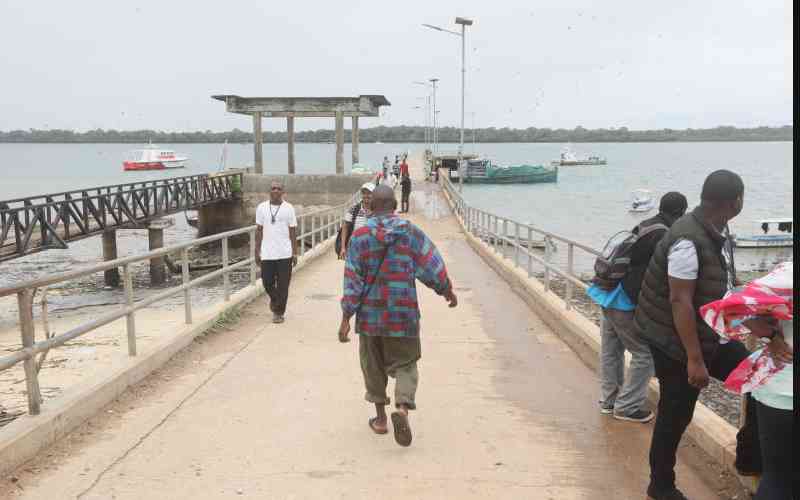Numbers don’t lie. Last year alone, 3,057 Kenyans died on our roads. In 2014 the deaths were fewer, at 2,907. Between January and March this year, 827 people died in road accidents across the country. Over the same period, more than 2,105 were injured in road accidents. And of these, more than half were pedestrians. Those are the numbers; depressing but real.
As the country mourns the deaths, families and friends of victims of road carnage have suffered the most; separated for ever from loved ones and bearing many other physical, psychological and economic consequences.
According to the World Bank, Kenya is estimated to be losing about five per cent of the GDP (approximately Sh310 billion) in accidents every year. Globally, losses due to road crashes are estimated to cost more than $518 billion every year.
This money can be put to better use for the benefit of many. It could be argued in a significant number of cases pedestrians — the most vulnerable and affected in road accidents — have been on the wrong; causing motorists to hit them. But other reasons such as inattentiveness of drivers, sometimes getting distracted by their phones, food, people or other objects within and outside their vehicles have also led to the suffering of pedestrians. Technical, mechanical and other defects, plus driver negligence and violation of traffic rules by jumping traffic lights, speeding and ignoring road signs have also been key contributors to road carnage.
In 2010, the United Nations General Assembly, through resolution A/RES/64/255, officially proclaimed a Decade of Action for Road Safety 2011–2020. The ambitious goal of this initiative was, and still remains, to save five million lives, 50 million serious injuries and $5 trillion by 2020.
The global Road Safety Action Plan focused on road safety management, safer roads and mobility, safer vehicles, safer road users as well as post-crash response.
Being a signatory to their solution, Kenya, in its road safety strategies and action plan, must, through NTSA which is the implementing agency, ensure road accidents reduce significantly. This can be done by implementing simple rules, which have to do with driver, pedestrian and all other road users’ actions.
Besides, NTSA can implement provisions of the Traffic Act, as amended in 2012, which allows the inspection of all categories of vehicles. A properly maintained and fully functioning vehicle meeting all safety requirements is less likely to be involved in a road crash.
Fatalities and injuries could be reduced if adequate improvements to the road worthiness testing system are put in place.
Early disclosure of a deficiency in the road worthiness of a vehicle would help to remedy that deficiency and hence prevent accidents. This will be beneficial to vehicle owners, drivers, pedestrians and all other road users. In the end, lives will be saved, tears will be dried in many a home, and money will be saved and redirected to many other developmental projects.
Acknowledging that actual accident deaths are not the only losses countries suffer by allowing unroadworthy vehicles on the roads will also help focus on emissions. These emissions have chemicals that pollute the environment and expose individuals to health hazards, including respiratory ailments like asthma and bronchitis, which heighten the risk of life-threatening conditions like cancer. Skin conditions and many other problems may also occur. These cause the generally unseen losses and burden our health care system with debilitating medical costs.
NTSA intends to outsource the implementation of continuous periodic road worthiness testing as part of a wider regime designed to ensure that vehicles are kept in safe and environmentally acceptable conditions during their use.
Periodic inspection of all categories of motor vehicles in keeping with international best practice and abiding by the law will be beneficial to all.
NTSA would work closely stakeholders and other private sector actors to inspect all motor vehicles. The authority will ensure standards are maintained and periodic audits carried out for transparency purposes, not necessarily for monetary reasons, but for the universal reason of increasing and sustaining safety on the roads and reducing preventable deaths.
Stay informed. Subscribe to our newsletter
 The Standard Group Plc is a
multi-media organization with investments in media platforms spanning newspaper
print operations, television, radio broadcasting, digital and online services. The
Standard Group is recognized as a leading multi-media house in Kenya with a key
influence in matters of national and international interest.
The Standard Group Plc is a
multi-media organization with investments in media platforms spanning newspaper
print operations, television, radio broadcasting, digital and online services. The
Standard Group is recognized as a leading multi-media house in Kenya with a key
influence in matters of national and international interest.
 The Standard Group Plc is a
multi-media organization with investments in media platforms spanning newspaper
print operations, television, radio broadcasting, digital and online services. The
Standard Group is recognized as a leading multi-media house in Kenya with a key
influence in matters of national and international interest.
The Standard Group Plc is a
multi-media organization with investments in media platforms spanning newspaper
print operations, television, radio broadcasting, digital and online services. The
Standard Group is recognized as a leading multi-media house in Kenya with a key
influence in matters of national and international interest.









